#Northern Brushtail Possum
Text

“Possum’s midnight snack”
Location: Malanda, Queensland, Australia
“Caitlin Henderson finds an unexpected guest on her balcony as a possum snacks on a large cicada. ‘There were heads here, wings there,’ Caitlin says. She had peeked out and spotted a common brushtail possum sitting on the windowsill. Quick reactions allowed Caitlin to photograph the possum hungrily dismembering a large northern greengrocer cicada while carrying a baby in its pouch. This nocturnal marsupial, native to Australia, is widespread and locally abundant. Its long, sharp claws are made for a life in the trees, but it has readily adapted to urban environments and come into conflicts with humans.”
by Caitlin Henderson, Australia
Wildlife Photographer Of The Year 2023
#caitlin henderson#australia#photographer#possum#malanda#queensland#animal#mammal#wildlife#opossum#nature
111 notes
·
View notes
Text
#1959 - Metrosideros excelsa - Pōhutukawa

AKA New Zealand Christmas Tree, Antipodean Holly, and Iron Tree. Metrosideros derives from the Ancient Greek for "heartwood" and "iron", and excelsus from the Latin for "highest, sublime".
Photo by @purrdence, at Napier in NZ.
Given the appallingly high number of introduced plants in New Zealand, it’s nice that one of the best natives is still around. A coastal evergreen that grows to 25m tall and 35 wide, in ideal conditions, but highly regarded for its ability to live in very much not ideal conditions, such as the most exposed cliff-faces and lava fields. The brilliantly red mass of stamens (and sometimes orange, yellow, or white) also have earned it many admirers. Regarded as a chiefly tree (rākau rangatira) by the Māori. Their trunks and branches are sometimes festooned with matted, aerial roots (the one growing in my grandparent’s backyard certainly did) and the underside of the oblong, leathery leaves are covered in densely packed white hairs.
The pōhutukawa and the related rātā species form twelve Metrosideros species endemic to New Zealand. Other species are found over the South Pacific, Hawaii, Papua New Guinea, to the Bonin Islands near Japan, and a number of sub-Antarctic islands. There used to be species in Australia, from 25myo and 35myo, but they died out for unknown reasons. Possibly their susceptibility to fires, although the amount of damage the introduced Brushtail Possum does to Metrosideros in New Zealand might also be a clue.
Their original range was the coastal zone of the North Island, north of 39° S, but it grows well in other parts of the island, and has naturalized in the cliffs around Sydney, Australia, can cause problems in Caifornia, and is regarded as invasive in South Africa. Given that it’s lost 90% of its original range to deforestation, people still use them for firewood, and they’re vulnerable to Myrtle Rust fungus, it’s just as well it has other options.
Pōhutukawa wood is dense, strong and highly figured and used traditionally for beaters and other small heavy items, and in shipbuilding, since the naturally curvy shapes made strong bracing timbers. Medically, extracts were used to treat diarrhoea, dysentery, sore throat and wounds.
Māori legend tells of Tawhaki, a young Maori warrior who attempted to find heaven to seek help in avenging the death of his father. He fell to earth and the crimson flowers represent his blood.
A particular 800-year-old pohutukawa on the windswept cliff top at Cape Reinga, the northern tip of New Zealand, is venerated as ‘the place of leaping’. From here the spirits of the dead leap off the headland and climb down the gnarled, twisted roots of the tree, descending into the underworld on their return journey to the traditional homeland of Hawaiki.
7 notes
·
View notes
Text
Creature Awaits #198
Each week I plan to feature an amazing creature, admiring God's fantastic artistry. Hopefully it’ll brighten someone’s day to see something new and interesting if they haven’t seen it before. : )
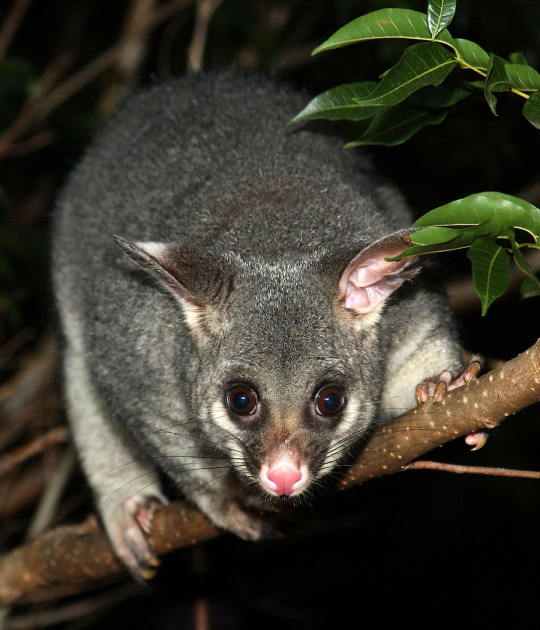
(Adorable photograph provided by the photographers of the Brisbane City Council (CC BY 2.0))
The Common Brushtail Possum
Scientific Name: Trichosurus vulpecula
Region: The six subspecies each inhabit various territories across Australia, with the largest ranges along the northern and eastern edges
Size: About 12 1/2"-23" (~32cm–58cm) long from head through body, with a roughly 9 1/2"-16" (~24–40 cm) long tail
Interesting Notes: This adorable marsupial's scientific name combines the Greek "Trichosurus", meaning "furry tailed" (given to brushtail possums) with the Latin "vulpecula", meaning "little fox". This particular species is perhaps most famous for its appearance in the amazing 1988 fantasy adventure film, "Willow".
#creatureawaits#Common Brushtail Possum#Trichosurus vulpecula#furry tailed#little fox#marsupial#Willow#1988 fantasy#Fin Raziel
1 note
·
View note
Photo
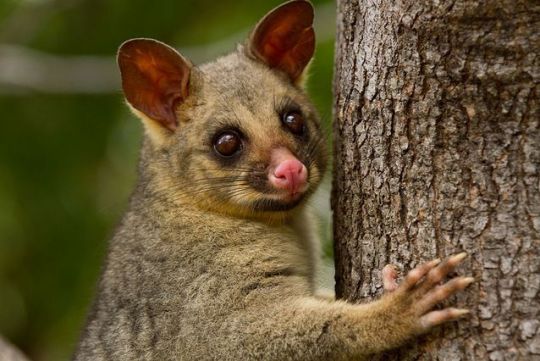
5 notes
·
View notes
Text
Australian veterinary clinic rescues a rare golden possum
The most adorable baby possum was found in Australia and upon further investigation, the internet is convinced he’s a Pikachu. With no disguise. A rescuer in Melbourne brought the orphan possum to the Boronia Veterinary Clinic, where she lit up the room with her bright yellow fur. It turns out, the golden colour occurs due to a mutation that causes a low level of the pigment melanin, which gives them their normal colour.

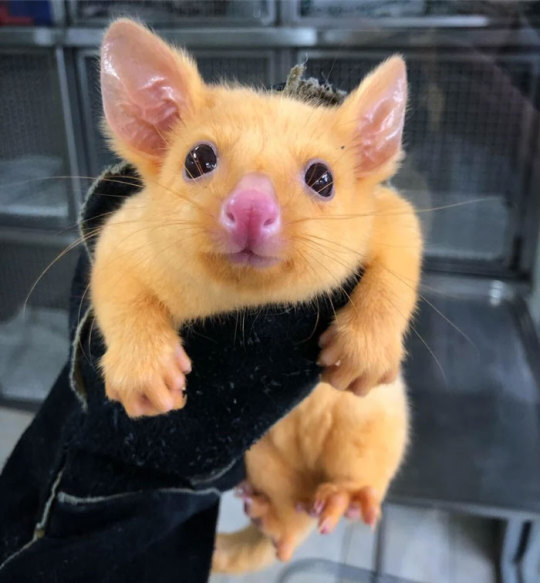
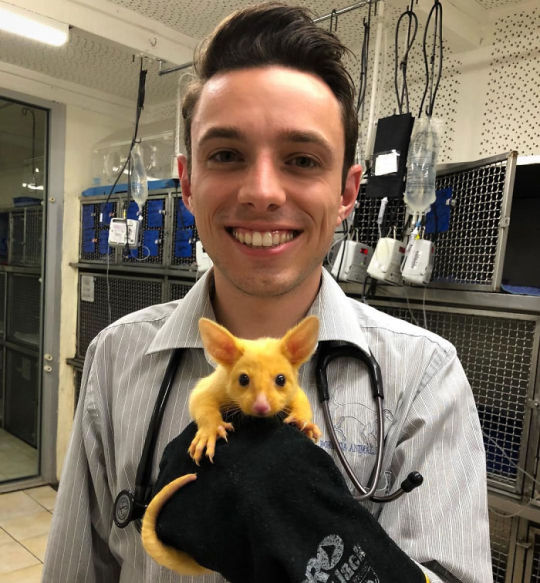
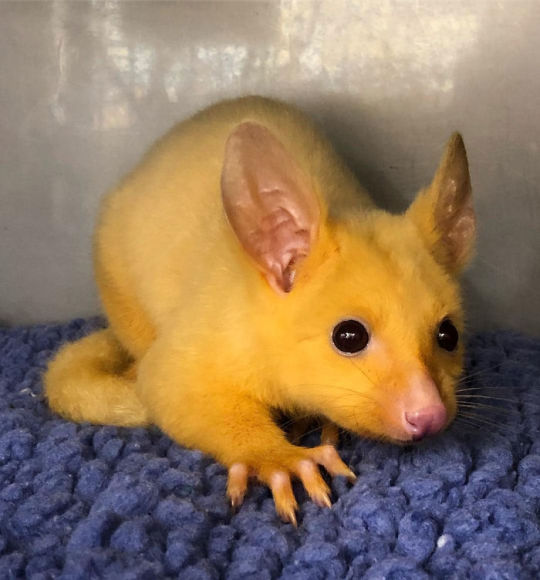
The standard colour for a brushtail possum is brown. However, they can have less common colour variations like this special yellow possum. There are other possums with this same colour mutation around, but they are much less common in the wild. Their bright colour makes them an easier target for predators as they do not camouflage as well as their brown counterparts.

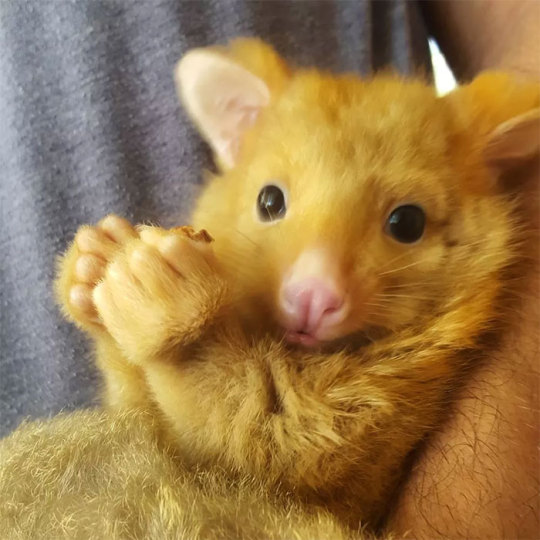
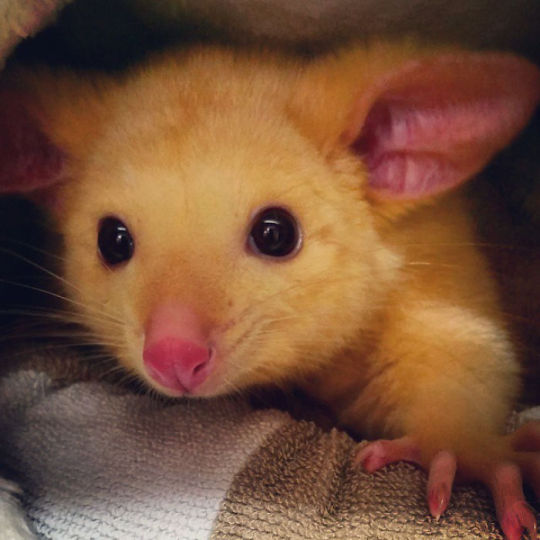
The brushtail possum (Trichosurus vulpecula) is one of the most widespread species in Australia, found throughout the eastern and northern parts of the continent, as well as some western regions, Tasmania, and a number of offshore islands.



https://www.boredpanda.com/rare-baby-golden-possums
Thank you😊❤️❤️❤️❤️
39 notes
·
View notes
Photo


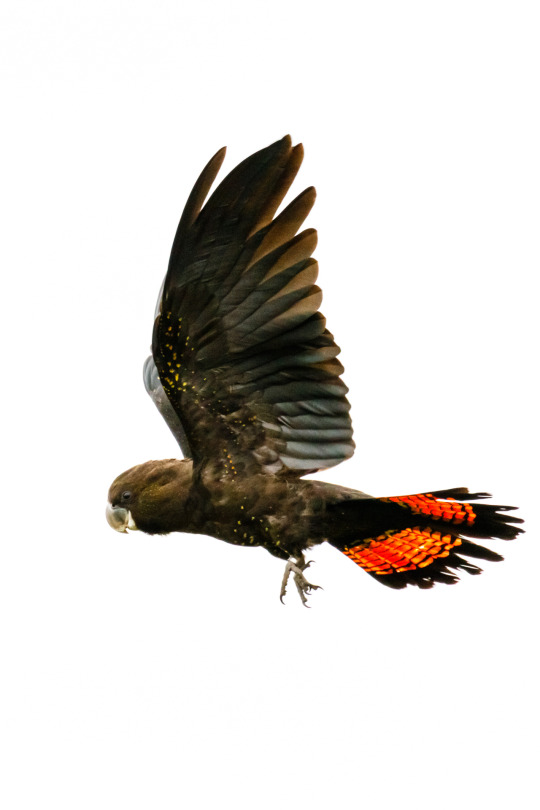
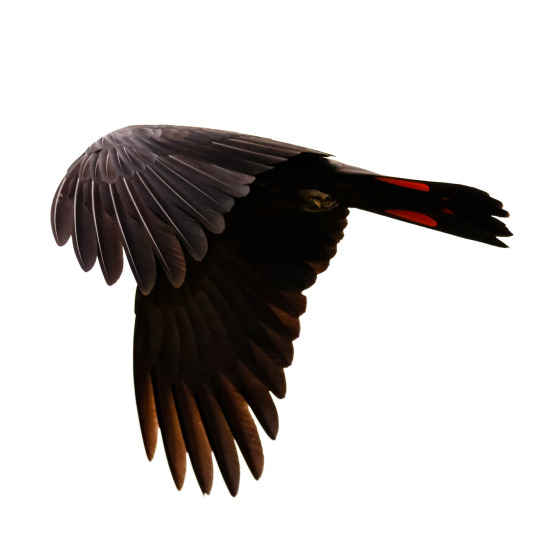
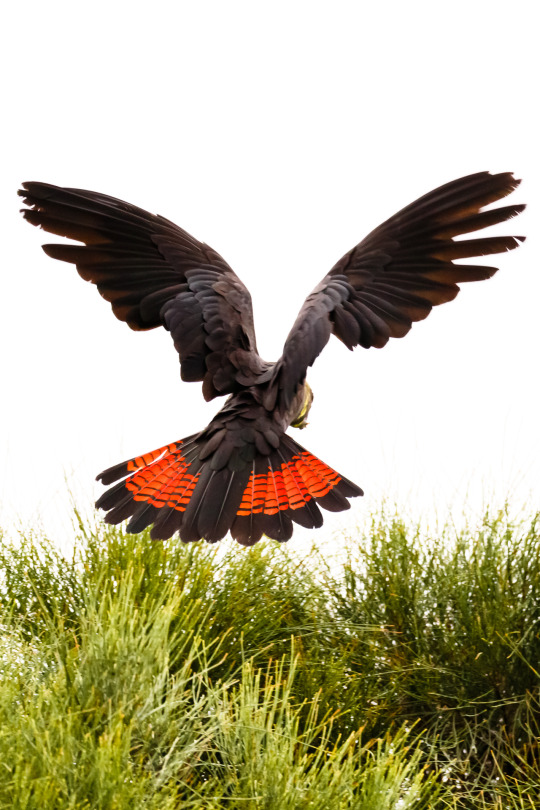

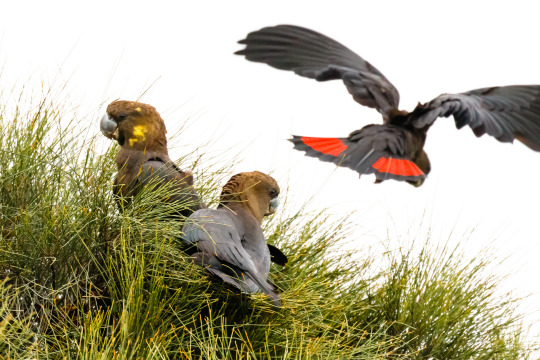
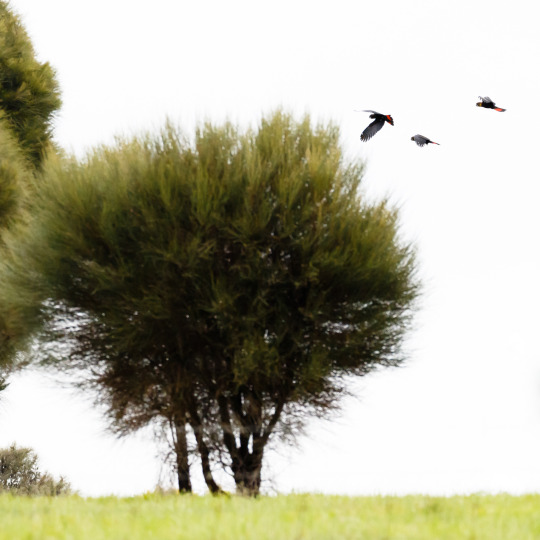
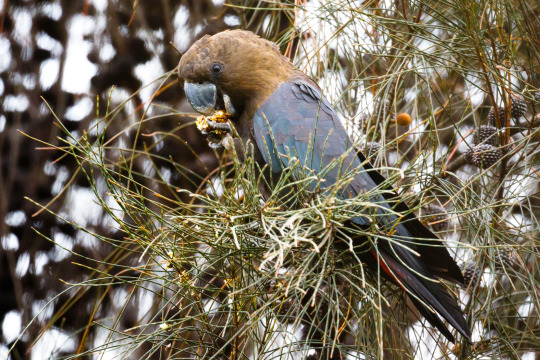
I've just enjoyed a few days exploring the beautiful landscape of #KangarooIsland off the southern coast of South Australia - one of Australia’s most treasured tourism destinations and a biodiversity hub. A highlight of my visit was spending a few hours on a rainy day watching and photographing a small flock of Glossy Black-Cockatoos (GBC's) on Ironstone Hill in Baudin Conservation Park on the eastern end of the island near Penneshaw.
Starting in the 1800s, European settlers began wiping out large swathes of drooping casuarina trees - the seeds of which the GBC relies on for food - for agriculture and housing. Stands of mature eucalyptus trees, which provide the natural hollows the birds require for nesting, suffered the same fate. Adding to the threat to this species is that nest failure rate in unprotected nests is high, principally as a result of predation by Common Brushtail Possums which have become more common. As a result the South Australian subspecies of the GBC (Calyptorhynchus lathami halmaturinus) has disappeared from the South Australian mainland and is currently restricted to Kangaroo Island. It is listed as Endangered under the Australian Government's Environment Protection and Biodiversity Conservation Act 1999. A population count of only 150 individuals in the early 1990s caused alarm and as result in 1995 a recovery program began which has been largely successful. By protecting nest hollows from predatory possums, erecting artificial nest boxes, and planting food trees, conservationists helped cockatoo populations spike to nearly 400 individuals by 2016.
The birds live in seven main flocks but 75 percent of the population lives in the western and northern parts of the island, where disastrous fires in the summer of 2019/20 severely impacted the casuarina habitat that the birds rely on. Despite the best efforts of conservationists and citizens, Kangaroo Island's GBC's face an increasingly uncertain future. As Australia's fires only become more common and intense due to climate change, the long-term survival of such a niche and geographically limited subspecies is tenuous. But there is hope, Natural Resources Kangaroo Island discovered 23 glossy black cockatoo chicks on the island earlier this year, some in areas heavily hit by bushfires.I hope you enjoy my photos of this special Australian cockatoo. Please feel free to share and if you feel like supporting the recovery program here is a link to more information - https://www.naturefoundation.org.au/support-us/glossy-black-cockatoo-recovery-program
1 note
·
View note
Photo
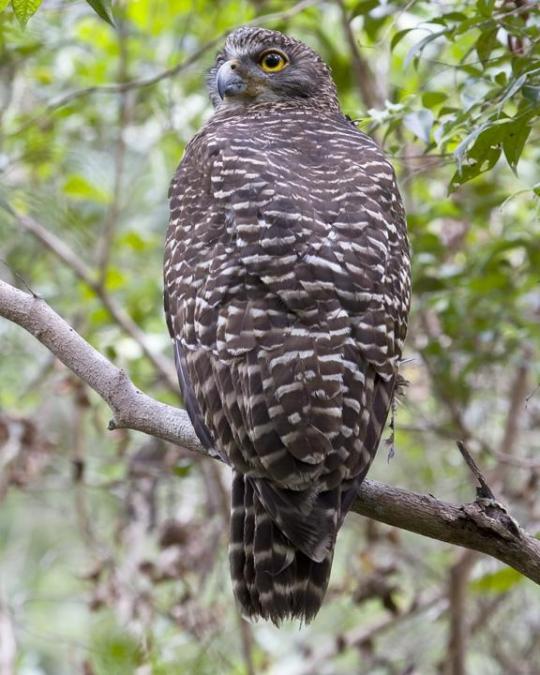
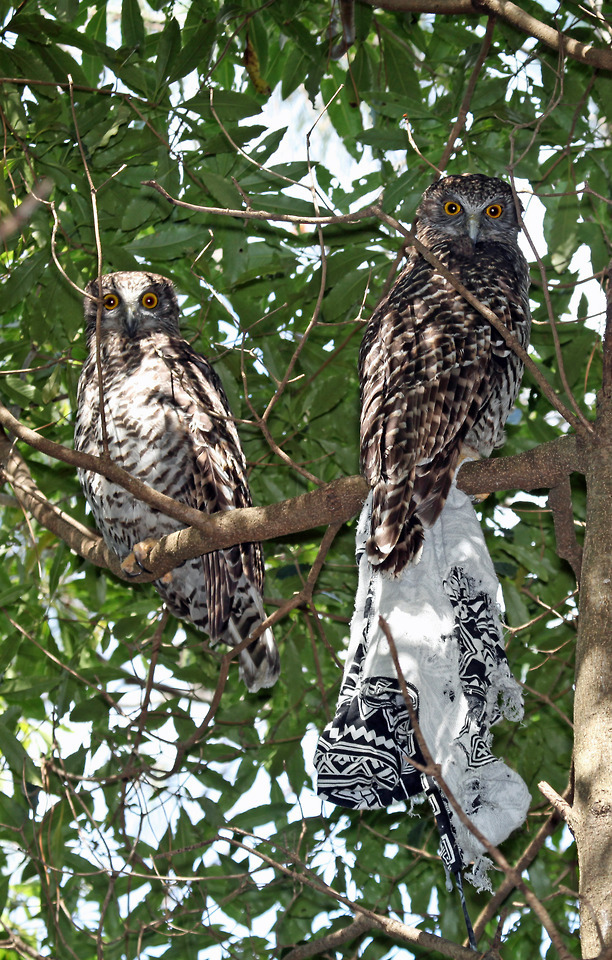
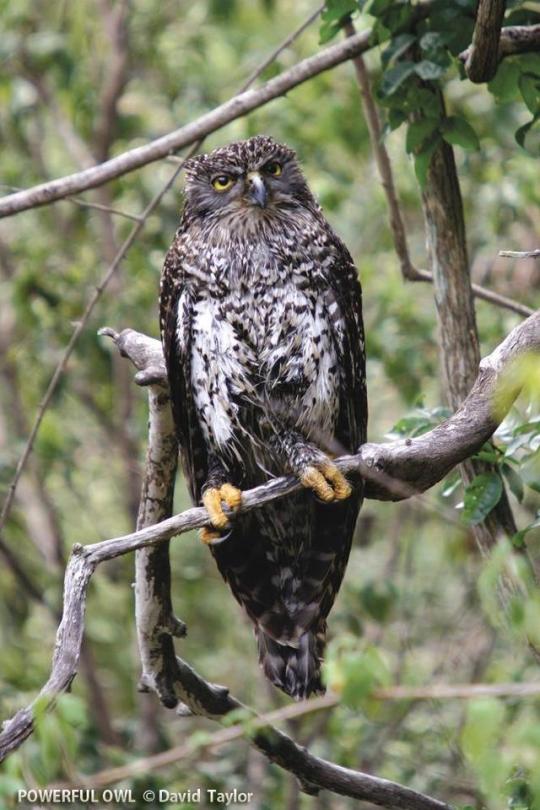

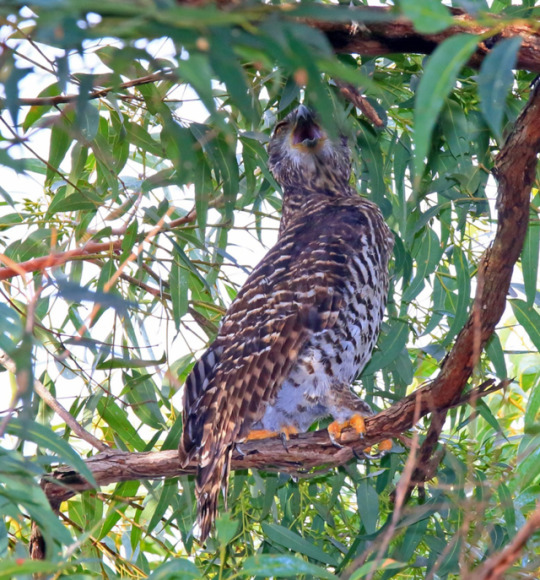
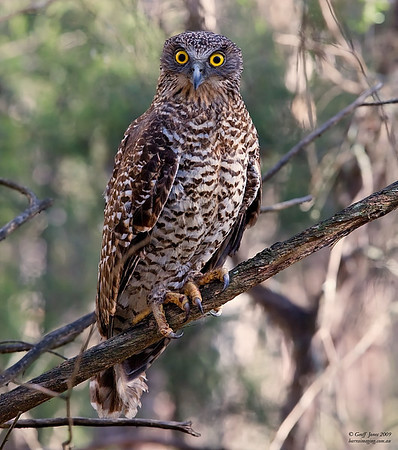
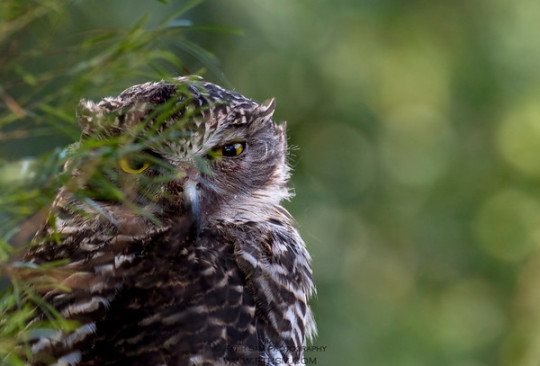
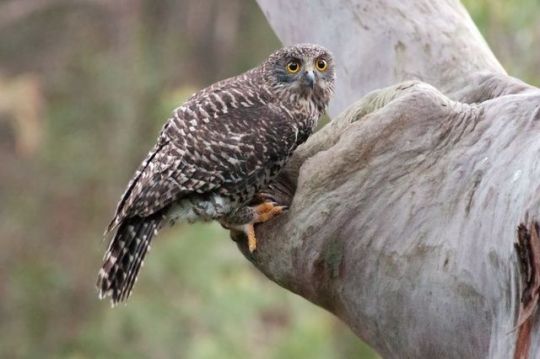

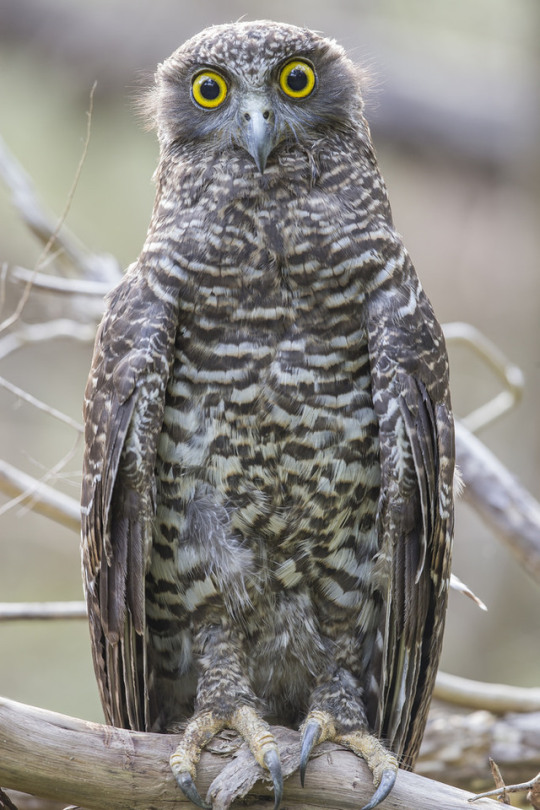
The powerful owl (Ninox strenua) is a species of owl native to south-eastern and eastern Australia, the largest owl on that continent. It is found in coastal areas and in the Great Dividing Range. Among all the owls in the world, the powerful owl is the ninth longest from bill-to-tail, the tenth heaviest and the eighth longest winged. Its body mass is about the same on average as the great horned owl but it has a proportionately much longer tail and wings than that species. This owl is the largest species of the "hawk owl" group found in much of Asia and the Australasian region, all included in the genus Ninox. Unlike in a vast majority of owl species, the male is slightly larger than the female on average.
The powerful owl has a long tail and a small head, lending it an atypical silhouette for an owl and imparting a more hawk-like appearance than any other large owl. The protruding bill and distinct brow ridges enhance the hawk-like appearance of the species. The facial disc is ill-defined. The upperparts are a dark gray-brown color, mottled and barred with whitish. The underparts are white with bold grey-brown V-shaped barring. The tail has six narrow white bars contrasting with grey-brown. This species has large yellow eyes, with greyish feathering down to the base of the toes and feet of a dull yellow color. They are aptly named, with very powerful and heavy claws. As a relatively geographically restricted species, there are no subspecies and no known geographic variation in the powerful owl.
This species measures 18 to 26 inches in length and spans 44 to 53 inches across the wings. Body mass in males have been reported at 2.2 to 4.9 lbs, while females can weigh from 2.3 to 3.5 lbs.
The male powerful owl's song is an impressive low, rather mournful-sounding and far-carrying double-hoot, whoo-hooo, each note lasting a few seconds at least, broken up by a brief silence and the second note being usually higher pitched than the first. The female has a similar call but has a higher pitched voice.
The powerful owl lives permanently in breeding pairs once in adulthood. They've been observed roosting singly, in pairs and in family groups of 3 to 4. They frequently roost during the day on branches in tall, open trees, often while still holding the prey caught the prior night. Several perches are used and may be occupied intermittently for years at a time. The powerful owl typically flies in a slow and deliberate way on its large wings.
The powerful owl is the top nocturnal predator of the forests and woodlands in its range. About 75% of the diet of the powerful owl is made up of arboreal mammals. Its diet consists largely of arboreal marsupials such as the greater glider, ringtail possums, brushtail possums, koala, sugar glider and feathertail gliders. These prey species vary extensively in body size, from the feathertail possum, which has an adult weight merely of 10 to 15 g (0.35 to 0.53 oz) to the koala, which is considerably larger in southern Australia, weighing a mean of 8,500 to 12,000 g (18.7 to 26.5 lb). Not infrequently, prey weight averages between 50-100%, whereas in most other raptors, including large owls, there seems to be a "rule" that most prey weighs 20% or less of the raptors own weight. The mean weight of prey for powerful owls can up to 10 times greater relative to their body weight than the mean prey weight of similarly sized northern owls such as great grey or great horned owls.
Powerful owls are not listed as threatened on the Australian Environment Protection and Biodiversity Conservation Act 1999. These owls do not do as well in heavily developed areas or in monocultures even if the plantation is made up of a native tree. This is largely because its prey is dependent on native and diverse forests.
99 notes
·
View notes
Text
How to Deter Possums from Your Garden
Download Article
Download Article
You're reading: How to Deter Possums from Your Garden
Possums in the Australian or New Zealand garden can be a real nuisance. However, they are a different animal from the opossum, which are the only marsupial in the northern hemisphere and require slightly different tactics to deter.[1] [2] If the possum takes a fancy to your fruit crop or your favorite tree, the animal can completely decimate it. More so than their relatives in the northern hemisphere, possums native to Australia (with the brushtail variety introduced to New Zealand) are adept, flexible, and creative climbers. Thus, you will need to find creative ways to discourage them from getting into your garden, eating specific plants, or blocking them from your yard altogether.
Blocking Access
1
Know what to protect. Possums seem to be fond of new growth on deciduous vines, fruit on fruit trees, and some of the new growth on pruned evergreens. Possums damage the plants when they eat the new growth, so this needs to be prevented.[3]
Possums may remove all of the buds, thereby weakening the plant, creating bare patches, and making it easier for plant diseases to take hold.[4]
Keep this in mind when planting new plants in your yard or when planting a garden. If you plant things a possum doesn’t like, such as prickly and smelly plants like a tea tree or geraniums for example, they are less likely to be destroyed.
2
Protect individual fruits and vegetables. For example, there are cloth bags that are made to cover individual fruits in a tree. Each one can be covered separately.[5] This will stop the possums from getting to the fruit and does not interfere with the growth of the fruit.[6]
You can also use old plastic plant pots with a slit down the side to protect individual fruits or vegetables. Place the fruit inside the pot, so that it is mostly covered but can still grow.
3
Enclose garden beds. Instead of keeping possums out of your yard, you can just try to keep them out of specific garden beds. The best way to do this is to create a full enclosure out of chicken wire.
This may make tending your garden a little more difficult but it will assure that your plants survive.
4
Block all entry points. Possums may make their way into your eaves or other access points on your house or shed. Possums trying to get into your garden shed or house eaves can be deterred by covering openings with permanent covers, such as pieces of wood, or by using anti-bird netting over any holes or entrance points.
Just make sure that the possums are not inside the shed or eaves when you cover them, as you could trap them inside.
If you’re not sure how the possums are getting in, patrol the area at dusk and watch for possums leaving their den.
Deterring Climbing
1
Make it hard for possums to climb structures or plants. If the possum is using a structure to get to the plant, make the structure difficult to climb. Wrap galvanized iron sheets around posts and over beams of structures, such as pergolas. This will stop the possum from being able to grip the surface with its claws.
This also requires ensuring that there are no trees or shrubs next to the structure that allow the possum to ease itself down from.
You can also use a plastic garbage can with the bottom cut off and a slit up the side. Put it around the trunk of a tree so that the possum is unable to climb up the tree.[7]
You can wrap sheet metal around the trunk of the tree to make it difficult to climb.[8]
You can also place thick netting around the trunk. The netting will catch the possum’s feet and discourage them from climbing.
2
Trim trees that are being eaten.[9] If a possum is eating the new growth off a tree, you need to figure out how to block its access to the tree. Branches should be far enough away from fences and structures so that a possum can’t jump to them.[10] This, in combination with blocking access to climbing the trunk of the tree, will give you the best chance of saving your tree from being decimated.
The good news is that while possums can jump, they can’t jump very far.[11] An agile, young possum can jump approximately 2.5 meters from a fixed, stable base but less than 2 meters from a swaying tree branch.
This means that trimming your trees so they are more than 2 meters from your garden fence or other structure should be sufficient.
3
Put netting on fruit bushes and trees. In particular, you should place netting over these plants while they are sending out new growth shoots or are bearing fruit. The netting will not keep possums out completely but they should make it difficult enough for the possums that much of the fruit will be saved.
Also remove any fallen fruit below fruit trees or bushes. Fallen fruit will attract possums to the area, so keep it to a minimum if you can.
4
Place a greased PVC pipe on top of your fence. This method only works if your garden is closed in with fencing, as it stops possums from climbing over the fence. It will take about one day of your time to install this protection.
Attach a large PVC pipe running horizontally across the top of all of the fencing. This will be hard for the possum to grip onto.
Then apply non-toxic grease to the PVC pipe. When a possum now tries to get into your garden, you should find that it cannot get a secure grip or footing because of a the grease on the drum. This causes the animal to fall off without injury.
Make sure that there are no holes or other points for the possum to cross the fence.
Applying Possum Sprays and Deterrents
1
Look into commercial possum sprays. Nurseries, supermarkets, and some hardware stores stock a range of possum-deterrent sprays that you can use. Remember to follow the instructions on the packaging so that your plants are not affected and so that possums the are not injured.
2
Read more: What to Do with All Those Summer Tomatoes – FineCooking
Make and apply a quassia chip spray. Quassia is a small branching tree that contains substances that deter the possum from wanting to be around it.[12] Make a spray of 100g quassia chips to 2 liters (0.5 US gal) of water. Heat for one hour, then strain. Add one tablespoon detergent. Dilute 1 part quassia solution to 4 parts water and spray on foliage.[13]
Most homemade sprays and applications need to be reapplied following rain. They should be reapplied frequently anyway, for full effectiveness.
3
Use household items to deter possums. These will require constant reapplication to be effective in the long-term. Some things that you can try include:[14]
Brew up some lapsang souchong tea. Spray this over the affected plants. Possums don’t like it!
Spread blood and bone around the vulnerable plants.
Use mothball flakes on beams, and around the base of plants. Place in pantyhose and hang from foliage.
Apply Indonesian fish sauce. Combine one tablespoon of sauce in one litre of water and then sprayed on foliage.
Make a garlic spray. Place 2 tablespoons of freshly crushed garlic into one litre of hot water. Leave overnight, strain, then spray on foliage.
Spray laundry detergent full strength onto foliage.
Tabasco sauce. Use this full strength. It can painted or sprayed onto foliage. Note that this can badly damage some plants, so do your research before applying this sauce.
Strong-smelling herbs such as sage, rosemary, or oregano may deter possums, especially when mixed with spicy chili pepper. Blend to a paste and spread around affected plants.
4
Surround your garden with predator urine. Urine from male foxes, weasels, and likely other predators has repelled possums in experiments.[15] That said, it may not be completely reliable, and it could attract other animals.[16] Look for predator urine at a hardware store or plant nursery, and follow the label instructions to distribute it in a perimeter around your garden.[17]
Carpet Python faeces are an effective possum deterrent, if available. Pythons are possum predators.
Some homeowners ring their garden with human hair to deter pests, but this is unproven.[18] Consider trying it the next time you have a haircut, scattering the trimmed hairs thinly over the surface.
5
Put up noisy deterrents. Wind chimes, noisy bells, or plastic bottles cut in half can catch the wind and make enough noise to keep some pests away. This isn’t foolproof, but hopefully your fruit trees will be ready to harvest before the possums learn to ignore the noise.
You can also buy commercial ultrasonic pest deterrents, outside the range of human hearing.
Dogs, especially outdoor dogs, will chase away possums, and their barking will scare them off.
6
Put up scarecrows. You can try a traditional scarecrow, or put up fake birds such as a tennis ball with feathers glued onto it. Again, the effectiveness of this deterrent varies from animal to animal, and may lessen over time.
Hanging mirrors near the scarecrow may amplify the effect.
Living With Possums
1
Plant food for possums. You may be able to steer a possum’s attention away from one plant to another. Put plants that possums like to eat, such as eucalyptus, at the edge of your garden. This may keep them occupied enough to keep them away from tender shoots and new growth in your garden.
2
Trap possums humanely. In New Zealand, possums are considered an invasive species. You should trap them and call animal control for removal.[19] That said, possums are protected in Australia. The South Australian government only recommends (humane) trapping when a possum is living in your building.[20] Even then, it may cause the possum less stress to lure it out, then block its access
For example, you could build a nesting box, place some fruit in it, and then place it near where the possum is dwelling. This should lure the possum into the nesting box.
If you do use a live trap, a small amount of honey works well as bait. Use the trap to transfer it out of the building, but not outside of the area. Possums almost always die when relocated.[21]
3
Understand that possums are protected in Australia but not in New Zealand. Possums may limit the kinds of plants you can grow in your garden but possums need human help to survive. If you live in Australia, you can help offset the destruction of their natural environment by creating a good location for them to live, including nesting boxes and attractive vegetation.
Possums are considered invasive in New Zealand. Call animal control or the Department of Conservation for assistance in removing them.
Community Q&A
Add New Question
Question
If a possum is relocated about 2 kms away, would it find its way back?
Andrew Carberry has been working in food systems since 2008. He has a Masters in Public Health Nutrition and Public Health Planning and Administration from the University of Tennessee-Knoxville.
Food Systems Expert
Expert Answer
Question
Can a possum dig holes in my garden?
It’s possible, but not likely.
Question
Can bright light at night deter possums?
Yes. Bright lights can deter possums.
Question
How do I keep possums from digging out my succulents at night?
I have found that putting bricks or large stones around the bases of my succulents has helped to keep them from digging them out.
Question
What flowers do possums NOT EAT?
Lavender, daphne, and hellebore have survived in my garden. Maybe camellias too.
Question
Do possums eat tomatoes growing on the vine?
Yes, they do. Possums basically eat any fruit or vegetable they can find. They don’t eat it on the vine, but they have techniques of getting the tomato off the vine.
Read more: 10 Best Beginner Plants
Question
How do I deal with possums in the yard when I have pets?
Possums are nocturnal, which means they only come out at night and sleep during the day. Even though they can be territorial, your pets should be fine because they will most likely sleep during the night and come out during the day.
Question
There are opossums pooping all over paving under my clotheslines. What can be used as a deterrent?
Eliminate the food source. If you’ve got opossums in your yard, chances are you did something to lure them there. Eliminate food and shelter, and you eliminate the animals.
Question
Can a possum pick up, carry and destroy small pots? What can they move?
They probably don’t pick them up and carry them, but they will knock them over and dig out the dirt and plants. I have a possum that has done this several times…No potted flowers for me, I guess!
Question
How do I prevent possums from going in my garage? Should I leave the light on or turn it off?
LadyDemon_9
Community Answer
Try cleaning your garage, possums normally like to head into garages to hide and possibly make a nest, so make your garage hard to find spaces to hide in. if that doesn’t work try putting food outside for them, make it a routine if possible.
See more answers
Ask a Question
200 characters left
Include your email address to get a message when this question is answered.
Submit
Video .
By using this service, some information may be shared with YouTube.
Tips
Unlike the Australian possum, the opossum can be a helper in your garden, eating all kinds of bugs and pests at night. Instead of eating all your plants, like the Australian possum, the opossum will clear slugs and snails out of your garden bed.[22]
Warnings
Possums are a protected native species in Australia. They must not be harmed. They are, however, invasive in New Zealand.
Possums are territorial. If you move them, they will either die because they’re invading another possum’s territory, or they’ll find their way back. So, learn to live with them.[23]
About This Article
Article SummaryX
To deter possums from your garden, try making a garlic spray by leaving crushed garlic in hot water overnight, then spraying it on and around your plants. Alternatively, try spraying the leaves of your plants with fish sauce, Tabasco sauce, or laundry detergent. You can also put up some wind chimes or bells to scare away the possums with loud noises. If these measures fail to keep possums out of your garden, consider using a commercial possum spray, which you can purchase from a local garden supply store. For tips on how to keep possums out of your fruit trees, read on!
Did this summary help you?
Thanks to all authors for creating a page that has been read 267,106 times.
Reader Success Stories
“We only have a small courtyard garden, but the possums love the rose bushes! We tried stringing fairy lights across…” more
Did this article help you?
Source: https://livingcorner.com.au
Category: Garden
source https://livingcorner.com.au/how-to-deter-possums-from-your-garden/
0 notes
Photo

Vulpecula
This article is about the constellation. For the animal with scientific name Trichosurus vulpecula, see common brushtail possum. For the Vul pistol, see PSS Silent Pistol. Vulpecula /vʌlˈpɛkjʊlə/ is a faint constellation in the northern sky. Its name is Latin for "little fox", although it is commonly known simply as the fox. It was identified in the seventeenth century, and is located in the middle of the Summer Triangle (an asterism consisting of the bright stars Deneb, Vega and Altair).
More details Android, Windows
0 notes